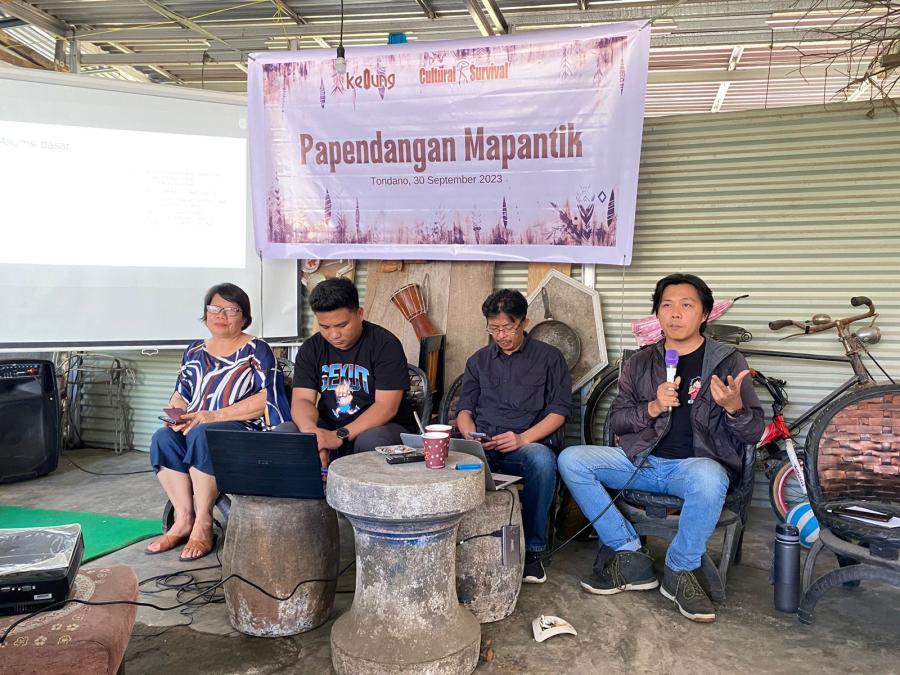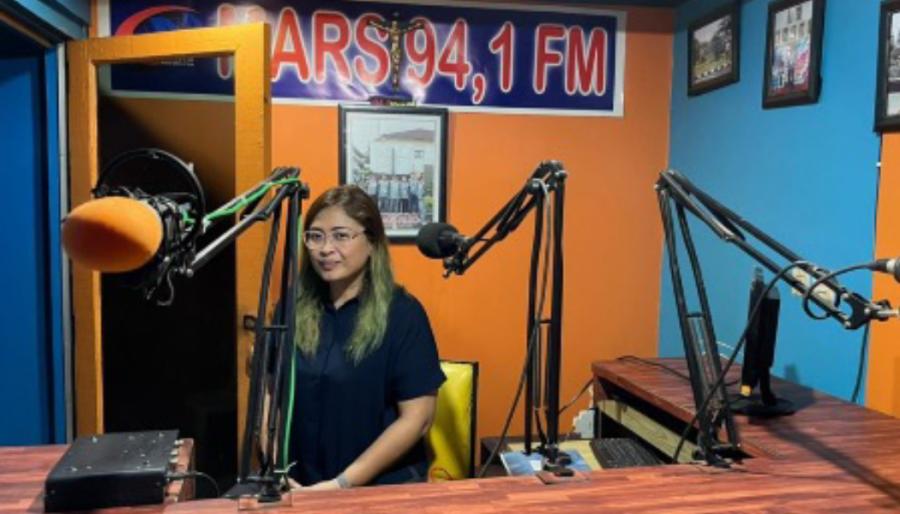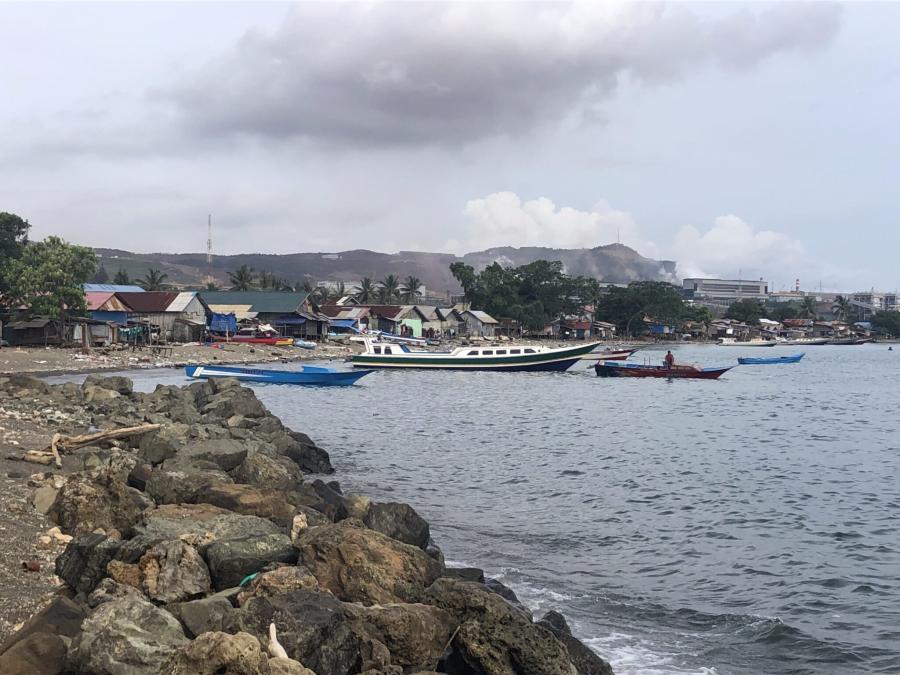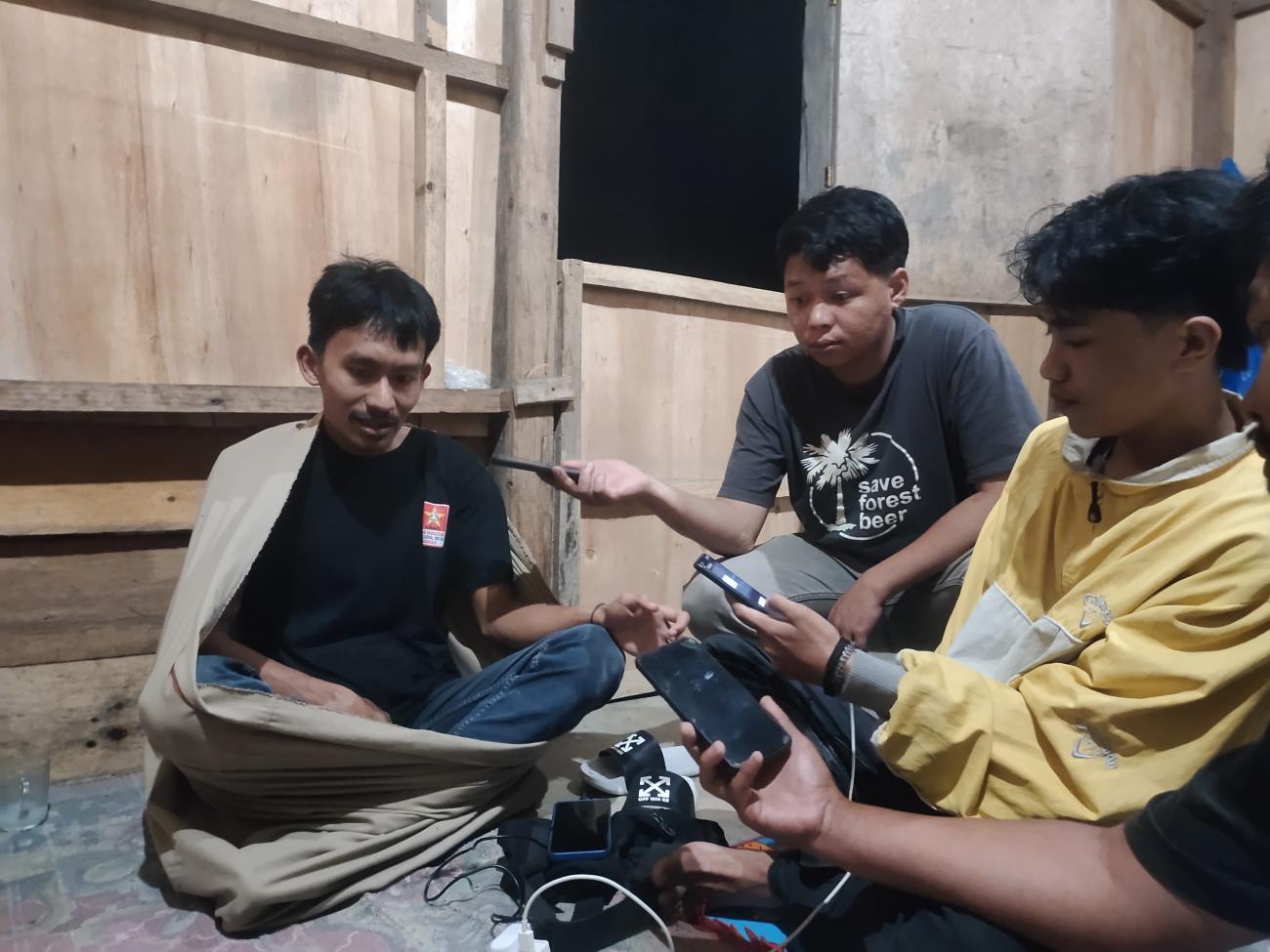
By Hendro Karundeng, Kelung Contributor, Tontemboan Tribe, Minahasa Nation
In the misty hills of Kolongan, a group of young Minahasan men and women gathered with a shared purpose: to reclaim their ancestral stories and traditions through the power of writing and media. This marked the beginning of “Mapantik ne Kelung” (The Writing of the Shield). The name evokes a powerful image of a kelung (shield), a tool once used by ancient Minahasan warriors, now wielded in a new kind of battle—one fought not with steel, but with words and images.
The Minahasa region in northern Sulawesi, Indonesia, is rich in culture, language, and spirituality. Yet, this land and its people are under threat. Rivers are polluted by mining waste, sacred hills have been leveled, and Indigenous languages are fading. In this new era, the fight for survival is no longer a physical one, but a silent war waged against environmental destruction and cultural erasure.
A Land Scarred by Mining
For the past decade, massive gold mining operations have taken a heavy toll on Minahasa. Companies like PT Meares Soputan Mining and PT Tambang Tondano Nusajaya have carved deep into the mountains, leaving a trail of destruction, disease, and displacement. Villages such as Pinasungkulan and Pinenek have been sold and their residents relocated, stripped of their farmlands. A sacred hill, Karakerakekan, once a nesting ground for the revered taon bird, is now gone.
The very essence of Minahasan life is being poisoned. Springs have dried, rivers are murky, and the water once used for healing ceremonies is now contaminated. Children are falling ill, and Elders lament that the birds no longer sing. The myths and traditions of the Minahasan people are being buried beneath mining debris.
Writing as Resistance: The Mapantik Journey
In 2024, with a grant from Cultural Survival, the Mapantik ne Kelung project was launched to empower young Minahasan people to become Indigenous journalists. The goal was to equip them with the skills to write, film, and tell their truths amidst the chaos of extractive industries.
The project began with an intensive writing workshop rooted in local philosophies. Trainees learned feature writing, interview techniques, and investigative storytelling. They documented their heritage, listening to the stories of women who had lost access to water for ritual baths and farmers who had been criminalized for opposing mining. The result was Kelung’s first-ever printed magazine, a chorus of voices that served as a powerful testament to their journey. Only 30 copies were printed, but each was a shield—a gift to Elders, youth, and community leaders.
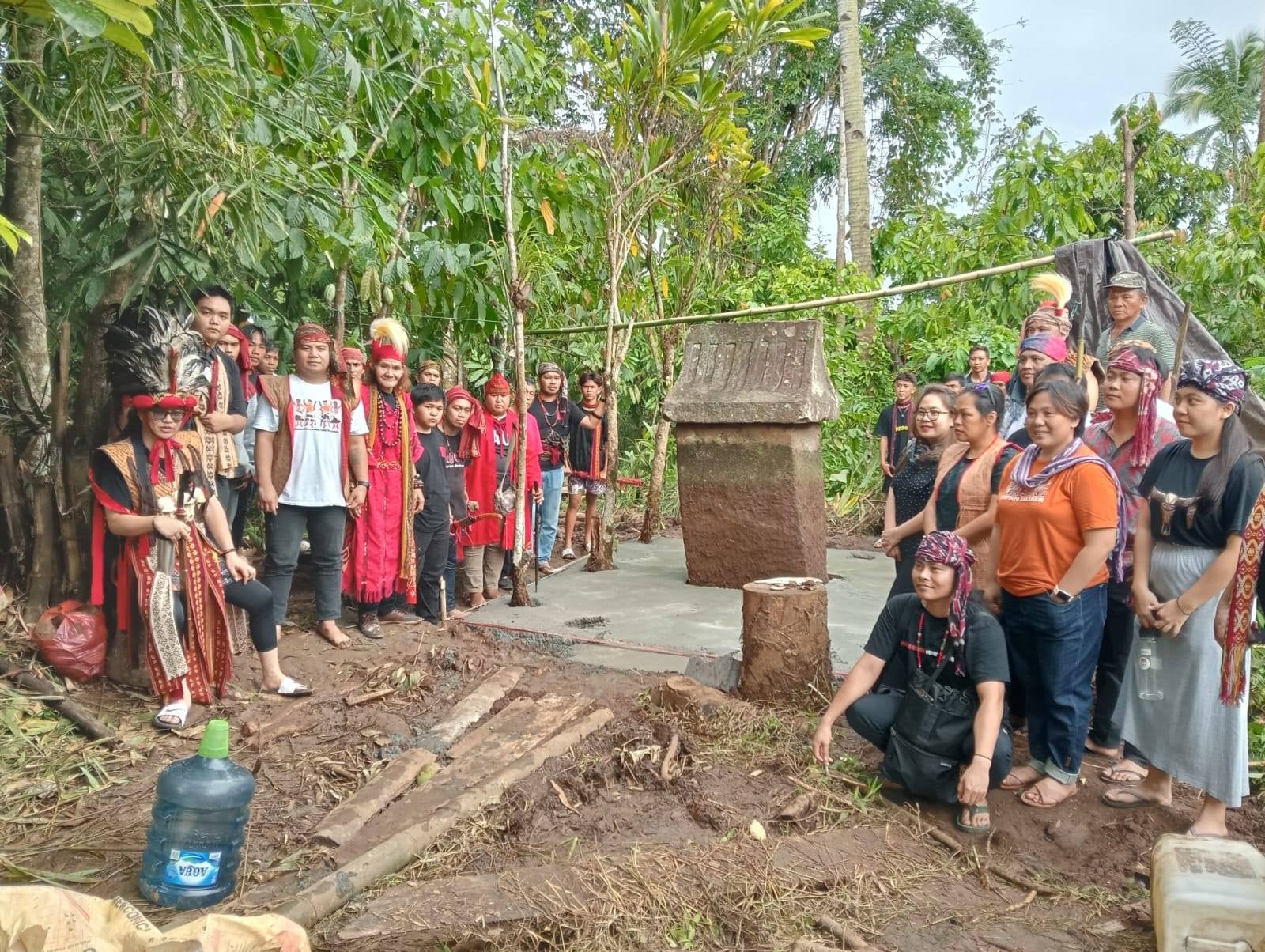
Expanding the Narrative: From Text to Video
To reach a wider audience in a culture rich with oral traditions, the project turned to video. Over nine months, a series of short documentaries were produced, highlighting the impacts of mining, stories of resistance, and glimpses of Minahasan culture. The videos, uploaded to Google Drive and linked on the Kelung website, were easily accessible. This allowed villagers with slow internet connections to download and watch them with their families. The videos spread farther than anyone expected, bringing new visitors to the platform and amplifying the voices of the community.
A Legacy of Awakening and Solidarity
The project’s impact went beyond media. In 2025, it helped local leaders repair and clean several waruga (stone sarcophagi) that were at risk of being destroyed. This act was more than heritage conservation; it was spiritual healing. In the same spirit, a book was produced about the Minahasan women’s movement, centered on the legacy of Maria Walanda Maramis, a symbol of Indigenous women's empowerment.
On April 17, 2025, the project helped organize the Hari Kebangkitan Masyarakat Adat Nusantara (Indigenous Peoples Awakening Day). The event brought together Elders, youths, and activists to celebrate their right to defend their heritage. Rituals were held, songs were sung, and Elders made declarations to protect sacred lands. This sparked new connections, leading to a collaboration with Mamasa elders from southern Sulawesi resulting in a shared journalism website, Tulasan.id.
A Beacon of Hope for the Future
Despite challenges with funding and production, the project created a ripple effect. It strengthened community networks, empowered women to find their voices, and gave young people the tools to document their culture. The project also became a safe space for Trans, Queer, and disabled Indigenous people, a rare and important achievement in the region. As a Mamasa Elder, Mr. Demmakadang, reflected, “You came with pen and camera, but what you really brought was a shield. Not to fight, but to remember.”
The work is far from over. The team plans to digitize waruga using 3D scans, to train more youth, and produce more books. They know the mining companies will not stop mining, but now they know they are being watched and their stories are being told. Through every story shared and every video screened, the kelung is lifted once more—not just as a shield, but as a beacon of resistance and hope.
In 2024, Tontemboan Tribe, Minahasa Nation received a grant from Cultural Survival’s Indigenous Community Fund, which provides opportunities for journalism, broadcasting, audio editing, technical skills, and more for community media from Indigenous communities around the world. In 2024, the Fund provided $480,000 in grants to 57 Indigenous communication projects benefiting Indigenous communities in 25 countries across the Americas, Africa, and Asia, including Argentina, Bangladesh, Bolivia, Botswana, Brazil, Chile, Ecuador, Colombia, the Democratic Republic of Congo, El Salvador, Guatemala, India, Kenya, Mexico, Nepal, Nigeria, Peru, the Philippines, Senegal, South Africa, Tanzania, the United States, Venezuela, and Zimbabwe.
